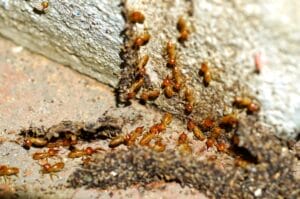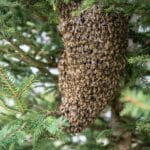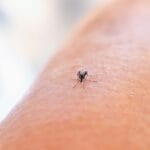What You Need to Know
- A tidy house can help keep pests away, but it’s not a guaranteed solution.
- Changing seasons can influence pest activity, so stay ahead with your control strategies.
- DIY pest control can assist with small issues, but it might not be the most cost-effective solution in the long run.
- Ultrasonic repellents have received mixed feedback and should not be the only method of pest control you use.
- Regular checks are essential because many pests can invade a home without showing immediate signs.
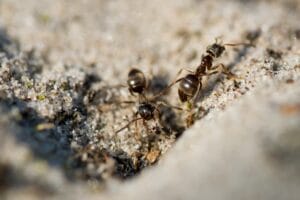
When you hear the rustling of tiny feet in the walls or see a line of ants in the kitchen, it’s easy to make assumptions or rely on what you’ve heard from others. But when it comes to pests, it’s important to distinguish between what’s true and what’s not. Let’s get started on debunking some of the most common myths about pest control.
Debunking the Myth of Pests and Dirty Houses

One common misconception I often hear is that pests only infest dirty houses. This is not entirely accurate. While a messy and neglected house can indeed attract unwelcome creatures by offering food and shelter, even the most pristine houses can be invaded by pests. Insects and rodents are opportunists in search of three things: shelter, food, and water. If they find an entry point in an immaculate house that meets these needs, they won’t hesitate to move in.
So, in addition to keeping things clean, you should also:
- Close any gaps or holes on the outside of your house.
- Store food in airtight containers and take out the trash on a regular basis.
- Repair any dripping pipes and get rid of any standing water.
Keep in mind that keeping your house clean is only one aspect of a thorough pest control strategy.
Understanding Seasonal Pest Activity
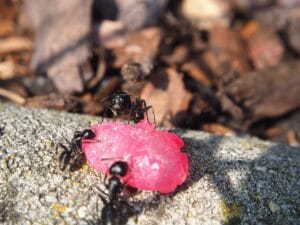
Some people believe that pests only pose a threat during specific seasons, such as summer or spring. However, the reality is that various pests are active at different times throughout the year, and your home is at risk of infestation all year round. For instance, rodents often look for indoor shelter during the colder months, while insects like ants and termites might be more noticeable in the warmer seasons.
For year-round home protection, you should:
- Get to know the seasonal behavior of pests in your area.
- Implement a pest control strategy that is effective all year round.
- Seek advice from professionals who offer seasonal pest control services.
Do-It-Yourself Pest Solutions: Pros and Cons

There is a time and a place for DIY pest control. If you’re dealing with a small issue, like one wasp nest or a minor ant infestation, going the DIY route can be quick and cost-effective. But for larger infestations or more tenacious pests like termites or bed bugs, DIY methods often don’t cut it.
This is why getting professional help can be so important:
- Experts have access to more powerful products and tools.
- They are trained to apply treatments safely and prevent future infestations.
- Some pests, like termites, can cause serious damage if not treated correctly.
Most importantly, don’t let the problem get out of hand. If you’re uncertain or your attempts are failing, it’s time to bring in the experts.
When to Call the Pros: Evaluating DIY Effectiveness
If you’re dealing with a persistent or large-scale pest problem, it’s likely time to call professional pest control services. This is especially true if you’ve tried DIY solutions without success. Professionals can identify the type of pest, the extent of the infestation, and the most effective treatment method.
Since they usually back up their work, you can rest easy knowing the issue is being addressed correctly.
Financial Impact of Household Pest Solutions
While assessing the price of pest management, it’s important to realize that utilizing professional assistance may be more economical in the long run. DIY solutions might appear less expensive initially, but they may turn out to be more costly if they fail to work and cause harm. For example, the typical cost of fixing termite damage can be in the thousands of dollars, significantly more than the cost of professional pest management services that could have stopped the infestation from happening.
Consider the potential long-term expenses versus the short-term savings of doing it yourself. It’s not just about saving a few bucks; it’s about safeguarding your home and your health.
Getting the Facts Straight: Ultrasonic Repellents
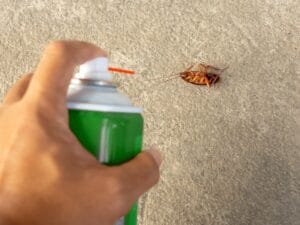
Next on the list are those ultrasonic pest repellents that claim to rid your home of pests with just a simple switch. They seem too good to be true, don’t they? Well, it’s a bit more complicated than that. Ultrasonic devices supposedly produce sound waves that are unbearable for pests, supposedly driving them away without the use of chemicals or traps. But do they really work as advertised?
Unpacking the Truth: Are Ultrasonic Devices Effective?
The jury is still out on the effectiveness of ultrasonic pest repellents. While some people swear by them, others have not seen any noticeable reduction in pest activity. Studies have also produced mixed results. One thing is clear, though: these devices are not a silver bullet and should not be your only form of pest control.
Let’s talk about a few things you should know about ultrasonic repellents:
- How well they work can depend on the type of pest and the surroundings.
- Some pests may get used to the noise after a while, making the devices pointless.
- These devices are frequently sold with overstated promises that lack robust scientific support.
If you’re considering using ultrasonic repellents, they should be used as part of a larger pest control plan, rather than as a single solution.
Identifying Unseen Threats: The Subtle Signs of a Pest Invasion
One of the most challenging parts of pest control is identifying the issue before it becomes a full-blown invasion. Many homeowners operate under the belief that if they can’t see pests, they don’t have pests. Unfortunately, by the time you see them, you could already be dealing with a large, unseen colony.
Termite Evidence: More Than Meets the Eye
Consider termites. These quiet devastators can be gnawing at the foundation of your home for quite some time without any noticeable signs. You may notice a hollow sound when you tap on wood, or your paint might look bubbled or cracked – small hints that termites may be on the job.
A further giveaway is the appearance of termite feces, or frass, which resembles tiny heaps of sawdust. If you notice any of these indicators, you should immediately contact a professional.
Quiet Intruders: Often Ignored Pests in Your Home
Termites are not the only silent intruders. Other pests such as carpenter ants, mice, and even bed bugs could be living with you without any obvious signs. Here are some subtle hints that you might have uninvited guests in your house:
- If you hear soft rustling or scratching sounds in the walls or ceilings, especially when it’s dark, it might be a sign of rodents.
- If you notice tiny, inexplicable stains on your bedding or furniture, it could be a sign of bed bugs.
- If there’s an unusually high number of ants around your home, it might mean there’s a carpenter ant colony nearby.
Being vigilant and taking action can save you a lot of headaches. Regular checks and not overlooking small irregularities can help you detect problems early.
Is It Possible to Control Pests in an Eco-Friendly Way?

Next, let’s address a major worry for many people: the environmental effects of pest control. Fortunately, there are eco-friendly alternatives that work. Integrated Pest Management (IPM) is a comprehensive strategy that employs a variety of methods to manage pests, with the goal of minimizing harm to people, property, and the environment.
- IPM is a method of pest control that works by making your home unappealing to pests.
- It only uses low-toxicity pesticides in a targeted way when it’s absolutely necessary.
- It promotes the use of non-chemical pest control methods, such as traps and physical barriers.
By using IPM practices, you can control pests in a responsible and sustainable way. And remember, even the greenest pest control method should be part of a comprehensive plan that includes prevention, monitoring, and — when necessary — intervention by professionals.
How Pest Control Affects Your Community’s Ecosystem
Pest control isn’t just about safeguarding our homes; it’s also about considering the broader implications — the effect on our community’s ecosystem. Responsible pest control is a balancing act. It’s about getting rid of the pests that endanger our homes and health while protecting the beneficial insects and wildlife that make our environment flourish.
Here are a few ways to make sure your pest control methods are environmentally friendly:
- Select pesticides that are specially designed for the pests you are facing to reduce the effect on non-target species.
- As a first line of defense, use physical pest control methods such as traps or barriers.
- Collaborate with pest control experts who are well-versed in environmentally friendly strategies.
By doing these things, we are helping to create a healthier ecosystem while still safeguarding our homes from pests.
Frequently Asked Questions
How do I know if I have a pest problem if I don’t see any pests?

Even if you don’t see pests, there are signs that could indicate a problem. Look for droppings, damage to plants or structures, or sounds of movement in walls. Also, keep an eye out for the more subtle signs, like a musty odor, which could indicate a hidden mold issue often associated with pest infestations.
Do home remedies work for pest control?
There are some home remedies that can work for small pest problems. For instance, a combination of vinegar and water can keep ants away, and diatomaceous earth can help with cockroach control. But, if you have a larger or more serious infestation, you’ll usually need professional pest control to make sure the problem is completely taken care of.
What risks are associated with DIY pest control?
DIY pest control can be hazardous if not performed correctly. Pesticides can be dangerous to your health, pets, and the environment if misused. Furthermore, without the necessary expertise, you may not completely eliminate the pests, resulting in a persistent issue. Incorrect techniques can also cause property damage.
How frequently should I get my house checked for termites?
As a rule of thumb, you should get your house checked for termites at least once a year. If you live in a region that’s prone to termites or if you’ve had problems with them in the past, you might need to get your house checked more often. Regular checks can help you spot the problem early on before it causes serious damage.
Is it okay to rely solely on ultrasonic repellents for pest control?
It is not advisable to use ultrasonic repellents as the only form of pest control. They can be part of your pest control strategy, but they are often not effective by themselves. A comprehensive approach that includes physical barriers, good sanitation practices, and chemical treatments if necessary, is more effective in keeping pests away.
Sorry, but the HTML content you provided is empty. There’s no text to rewrite.
